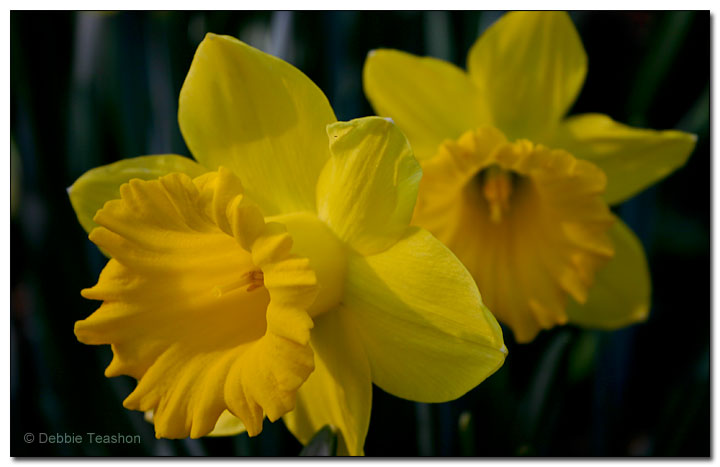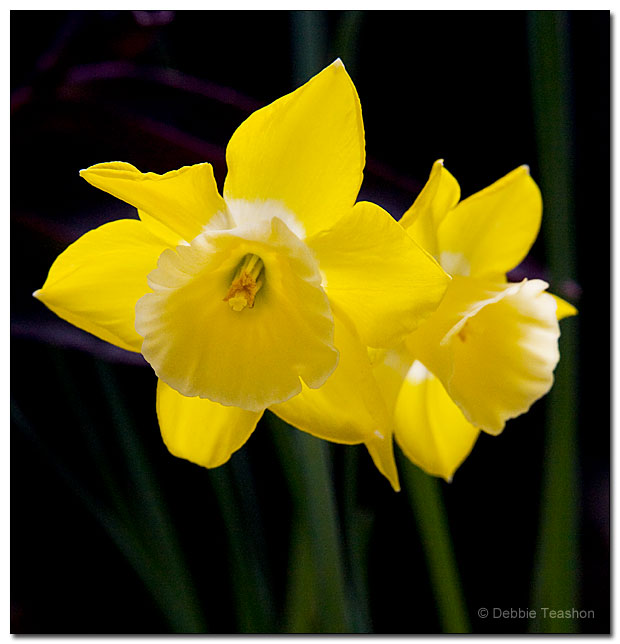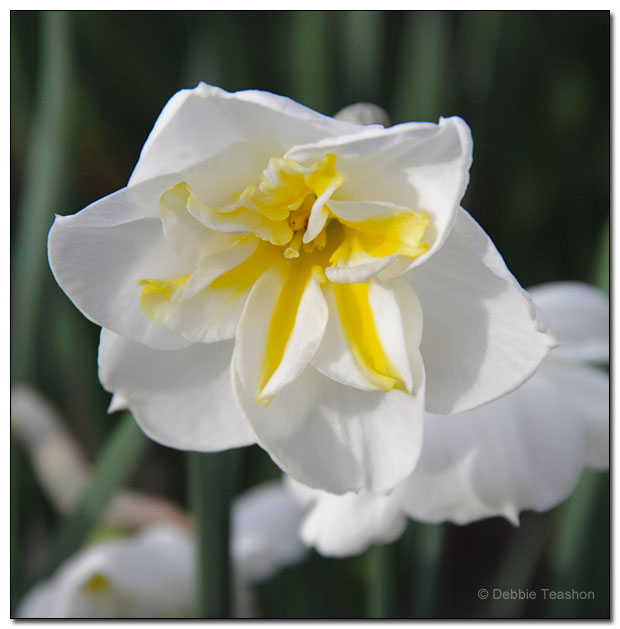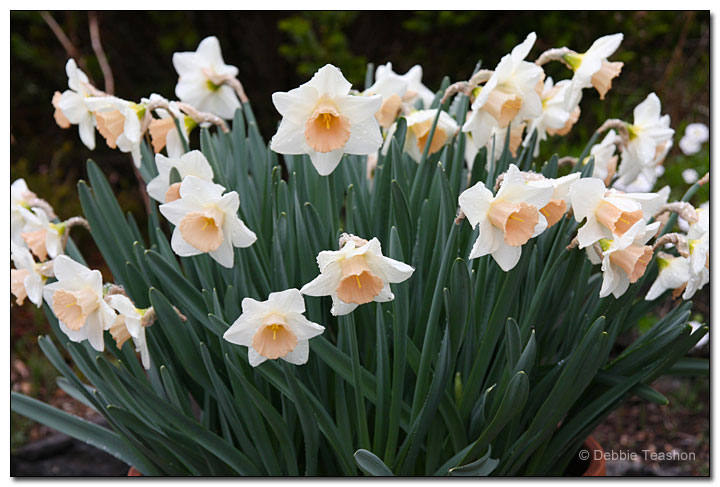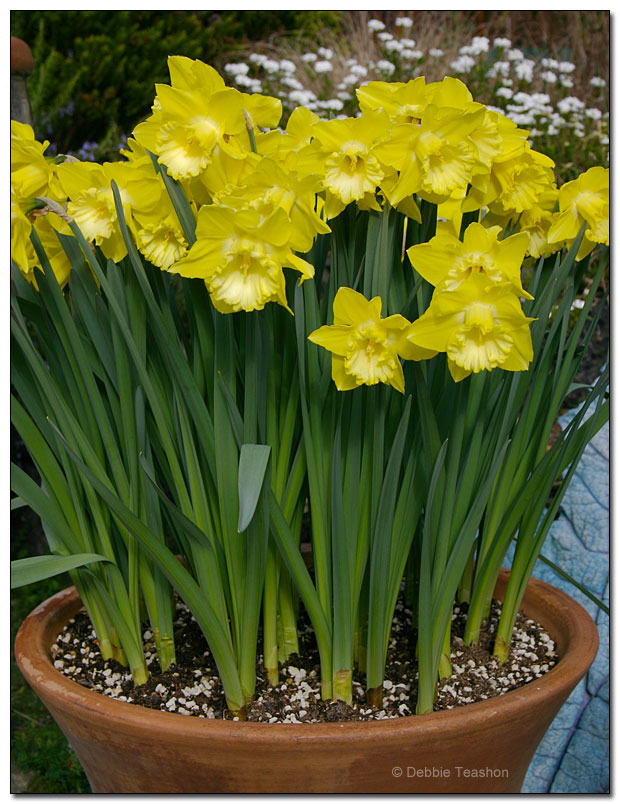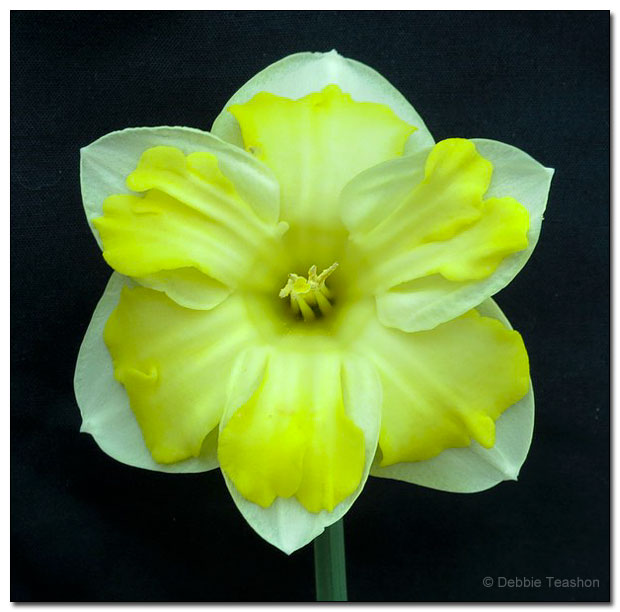The Daffodil Spring

I wandered lonely as a cloud That floats on high o’er vales and hills, When all at once I saw a crowd, A host of golden daffodils; Beside the lake beneath the trees, Fluttering and dancing in the breeze. ~ William Wordsworth
In the last throes of winter, the sight of sunshine-yellow flowers is sometimes enough to lift the heart. With a last name of Wordsworth and a fancy taken to daffodils, William was destined to exquisitely capture the enchanting essence of a field of naturalized daffodils. He speaks for all regarding the narcissus — a popular spring flower in the Northwest and worldwide.
Open any spring bulb catalog, and you will find page after page of daffodils — an offering of heritage bulbs (existing before 1940) to newer introductions. There are so many options it can be challenging to choose. It’s hard to imagine that some species are threatened with extinction in the wild.
The common name daffodil is thought to come from the Latin name Asphodel. Other ideas say the name came from the Latin affodilis (or asphodilis) or the Greek asphodelus. These names were for plants that belonged to the mythical Persephone — queen to Hades. The day he kidnapped her and took her to the underworld, she was picking daffodils. In the Greek myth, the plants grew in the meadows of the underworld and became Persephone’s sacred plant.
Meanwhile, back in the real world, some regions in England have common names with a playful quality, such as the daffydowndilly or daffydilly. In other areas, the bulb is referred to as the Easter lily, hen and chickens and even goose-leek. No matter the common name, the genus narcissus is a winter-to-spring staple wherever it is grown.
Locally we have our own daffodil stories. Drive down a road on Bainbridge Island this time of year, and you will see clumps of King Alfred-type daffodils blooming everywhere. They aren’t wild, though; they are planted. Every year, Dick Krutch donated 5,000 bulbs to neighborhoods around the island. His daffodil gifts are a tribute to Mary Sam — a Native American midwife who loved daffodils and planted them around her island home. Volunteers help keep the legacy going by planting more bulbs each year.
Daffodils signal the waking of the garden. New gardeners become concerned when leaves poke out of the ground in January, fearing the cold weather will do them in. Yet, in this region, their hardiness lets them sail through the cold unscathed.
There are many outstanding varieties to grow. Here are some choices to consider for your spring garden show.
‘Trepolo’ (top photo) is an unusually split corona daffodil with stunning colors. Unlike many other doubles, the flower faces outward, so you can see its unique face, which makes it outstanding as a cut flower.
‘Hillstar’ is a short, sassy, American-bred Narcissus jonquilla cross, which carries two to three flowers per stem. The canary-yellow petals form a white halo around the center as it ages. The trumpets fade from yellow to ivory white.
‘Lemon Beauty’ is another lovely split corona with snow-white petals and streaks of sunshine-yellow in its white cup. The downside to this variety is the flowers nod, so their faces are not easily seen. Plant them on top of a wall or in a container to enjoy their beauty.
‘Passionale,’ a prizewinning show flower worldwide, is the product of years of breeding for a pink daffodil. Since 1956, this cultivar has graced gardens with its stunning flower of pure-white petals and a soft-pink trumpet.
‘Spellbinder,’ introduced in 1944, could almost be considered an heirloom. It looks like a typical King Alfred-type daffodil. Yet it has a few surprises in store. The flower has a rich lemon hue, and inside the trumpet, the yellow turns white as it ages.
‘Butter Paddy’ is an exciting new daffodil bred by Ringhaddy Daffodils in Northern Ireland and will be available in the states this year. Keep an eye out for this stunning split corona type come fall.
‘Cha Cha’ is very similar to ‘Elizabeth Ann’ — another variety from the cyclamineus group — only the ‘Cha Cha’ corona has warmer peach tones. Both have pure-white petals that reflex backward, giving them a windswept look.
‘Art Design,’ at first glance from the back, may look like another wild cyclamineus daffodil. Come to the front, and you will find that the wavy corona looks like someone stuffed it to overflowing with petticoats. Light-greenish-yellow petal fades to a white halo. This double narcissus from the Netherlands is well worth growing for its unique shape and color.
Almost anyone with a garden has grown at least a small clump of narcissus. If you meet their requirements, these bulbs will grow well in nearly every garden setting as long as they have good drainage. Daffodils are pest resistant. If you have problems with deer and rodents eating tulips and decimating your crocus bulbs, these pests leave the narcissus alone. However, slugs and snails are typically horrid with them — devouring the flowers and foliage.
A Few Tips for Success
- Buy top-size bulbs. For a few years, small bulbs at bargain prices may not give you flowers. If you buy at a local nursery, check that bulbs are firm and that no mold is growing.
- Plant your bulbs in September, October and November. If you forget, you can plant later in January; however, flowers will open later.
- Daffodils need good drainage, with little to no water in summer. Plant them in areas where there is no summer irrigation.
- Grow in full sun or at least a half-day sun once the trees leaf out.
- Plant bulbs 6 inches deep.
- To plant a clump, dig a hole that will accommodate your bulbs spaced 2-4 inches apart. Clusters should have at least five to 10 bulbs, but drifts of 20 to 25 bulbs increase the show.
- Mix in an organic bulb fertilizer in the planting basin. Place the bulbs and backfill them with the same soil. Water them in and then spread mulch over the top. The mulch will help keep the foliage clean when they come out of the ground the following season.
- You can use a bulb planter for each bulb, but digging bigger holes with a shovel to accommodate all the bulbs is much faster.
- Once the plant finishes flowering, take the spent flower off, leaving the stem. Now is the time for the foliage to ripen. It is essential not to remove foliage as it produces next year’s flowers. Leave the foliage until it is yellowing and dying back to the ground.
- Fertilize your bulbs every fall. They prefer a neutral pH of 7, so add lime at the same time if the soil is too acidic.
- When the flowers start to diminish compared to the amount of foliage, it is time to divide the crowded bulbs. Dig bulbs after the foliage has ripened, separate the smaller bulbs and replant. Divide bulbs every three to five years.
Originally written for West Sound Magazine 2017.

